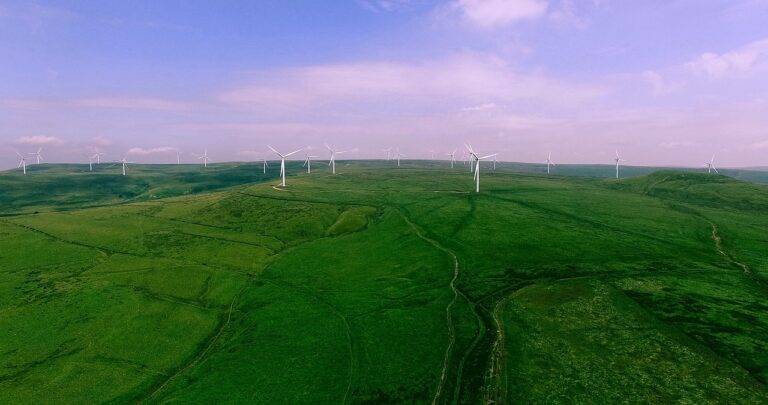How Tech is Shaping the Future of Transportation Infrastructure
Transportation infrastructure is a critical component of modern society, enabling the movement of people and goods efficiently and safely. With advances in technology, the future of transportation infrastructure is being shaped in new and exciting ways. From autonomous vehicles to smart cities, tech is revolutionizing how we travel and interact with our surroundings.
The Rise of Autonomous Vehicles
One of the most notable advancements in transportation technology is the development of autonomous vehicles. These self-driving cars, trucks, and buses have the potential to revolutionize the way we commute, reducing accidents, congestion, and emissions on our roads. Companies like Tesla, Google, and Uber are investing heavily in autonomous vehicle technology, with hopes of making self-driving cars a common sight on our streets in the near future.
Integration of AI and Machine Learning
Artificial intelligence (AI) and machine learning are playing a crucial role in shaping the future of transportation infrastructure. These technologies are being used to optimize traffic flow, predict congestion, and improve safety on our roads. AI-powered systems can analyze vast amounts of data in real-time, enabling transportation planners to make informed decisions that benefit both drivers and the environment.
Smart Cities and Infrastructure
Smart cities are another key trend in transportation infrastructure, leveraging technology to create more efficient and sustainable urban environments. From connected traffic lights to electric charging stations, smart cities are embracing innovative solutions to reduce congestion, enhance public transportation, and improve overall quality of life for residents. By incorporating IoT devices and data-driven insights, cities are able to monitor and manage their transportation systems more effectively, ultimately leading to a more seamless and integrated transportation experience.
Hyperloop and High-Speed Rail
The concept of high-speed transportation is also evolving with projects like the Hyperloop and high-speed rail systems gaining momentum. The Hyperloop, a proposed mode of transportation that would enable passengers to travel at speeds of over 700 mph in vacuum-sealed tubes, has the potential to revolutionize long-distance travel. Similarly, high-speed rail systems in countries like Japan and China are setting new benchmarks for transportation efficiency, connecting cities and regions in record time.
Infrastructure Adaptations for Electric Vehicles
With the rise of electric vehicles (EVs) on our roads, transportation infrastructure is evolving to accommodate this clean and efficient mode of transportation. Charging stations are becoming more widespread, enabling EV owners to recharge their vehicles easily and conveniently. Additionally, cities are investing in infrastructure upgrades to support the growing demand for EVs, including dedicated lanes, incentives for electric car purchases, and policies to reduce emissions from traditional vehicles.
Drone Delivery and Air Mobility
As technology continues to advance, transportation infrastructure is expanding beyond our roads and railways to include aerial solutions like drone delivery and air mobility. Companies like Amazon and UPS are exploring the use of drones to deliver packages quickly and efficiently, bypassing traditional transportation routes. Moreover, air taxis and flying cars are on the horizon, offering a new mode of transportation for urban commuters looking to beat traffic and congestion.
Conclusion
Overall, technology is shaping the future of transportation infrastructure in ways we never imagined possible. From autonomous vehicles to smart cities, high-speed rail to drone delivery, the possibilities are endless for how we will travel and interact with our surroundings in the years to come. By embracing innovation and investing in sustainable solutions, we can create a more connected, efficient, and environmentally friendly transportation system for future generations.
FAQs
What role does AI play in shaping transportation infrastructure?
AI is being used to optimize traffic flow, predict congestion, and improve safety on our roads. By analyzing vast amounts of data in real-time, AI-powered systems enable transportation planners to make informed decisions that benefit both drivers and the environment.
How are smart cities leveraging technology to improve transportation systems?
Smart cities are incorporating IoT devices and data-driven insights to monitor and manage their transportation systems more effectively. From connected traffic lights to electric charging stations, smart cities are embracing innovative solutions to reduce congestion, enhance public transportation, and improve overall quality of life for residents.
What is the Hyperloop and how will it impact transportation infrastructure?
The Hyperloop is a proposed mode of transportation that would enable passengers to travel at speeds of over 700 mph in vacuum-sealed tubes. If realized, the Hyperloop has the potential to revolutionize long-distance travel, setting new benchmarks for transportation efficiency and connectivity between cities and regions.





